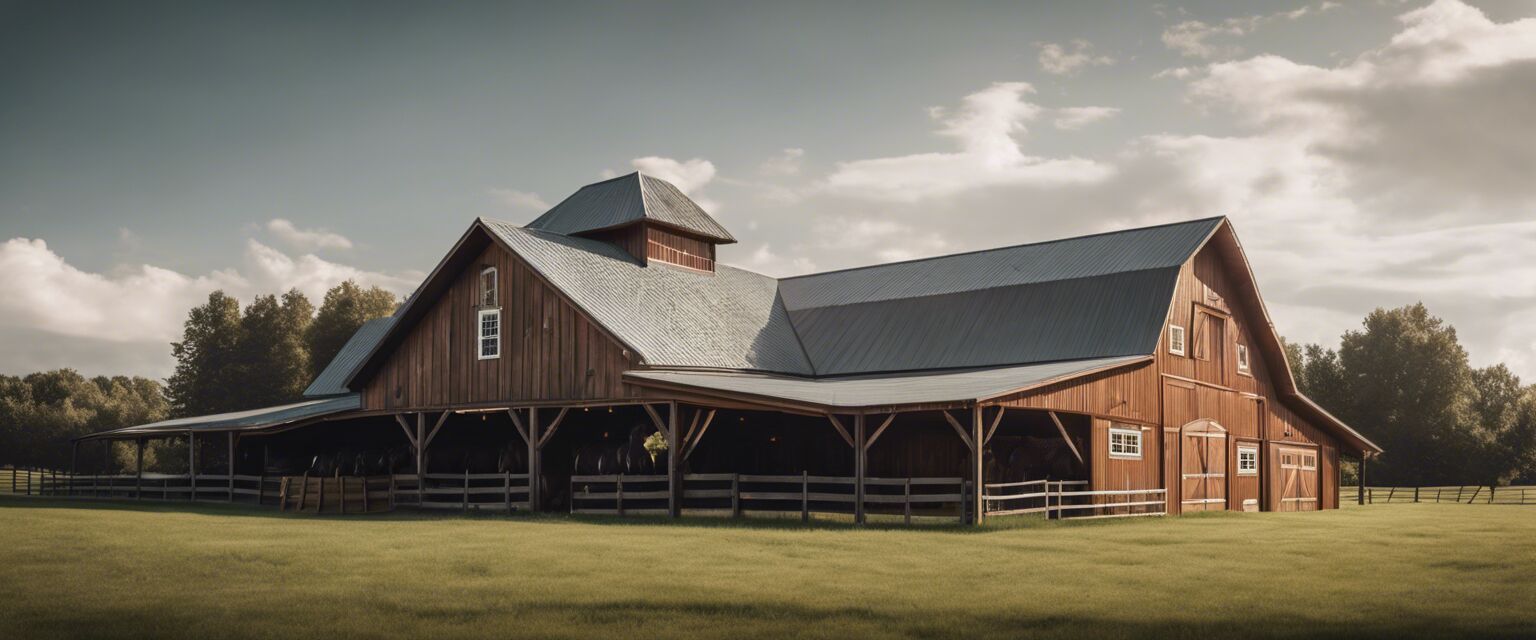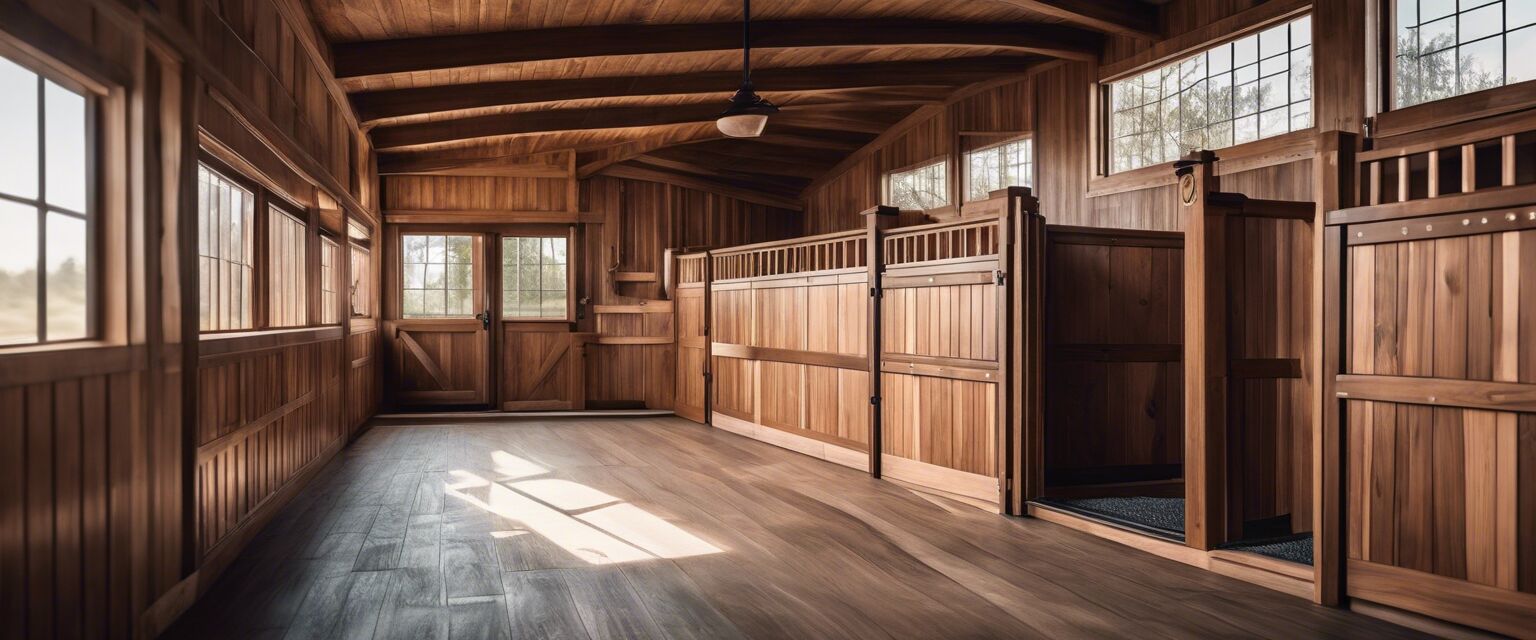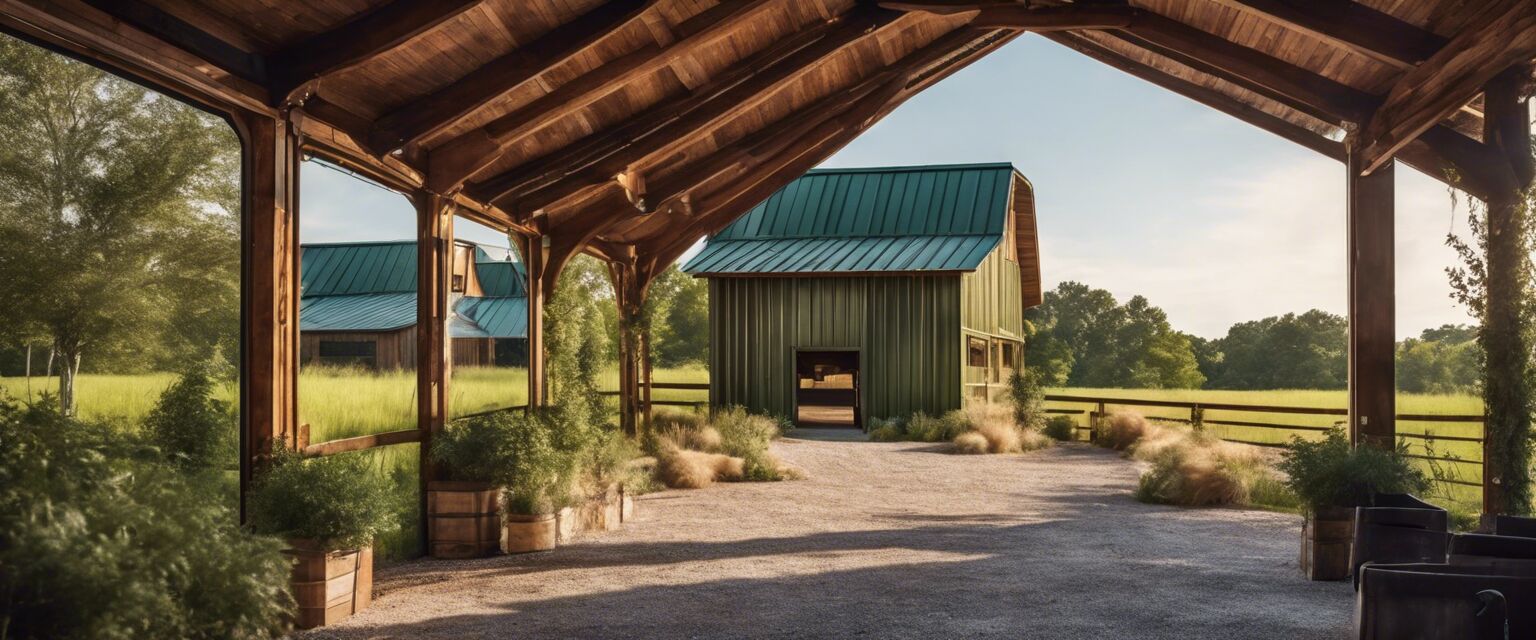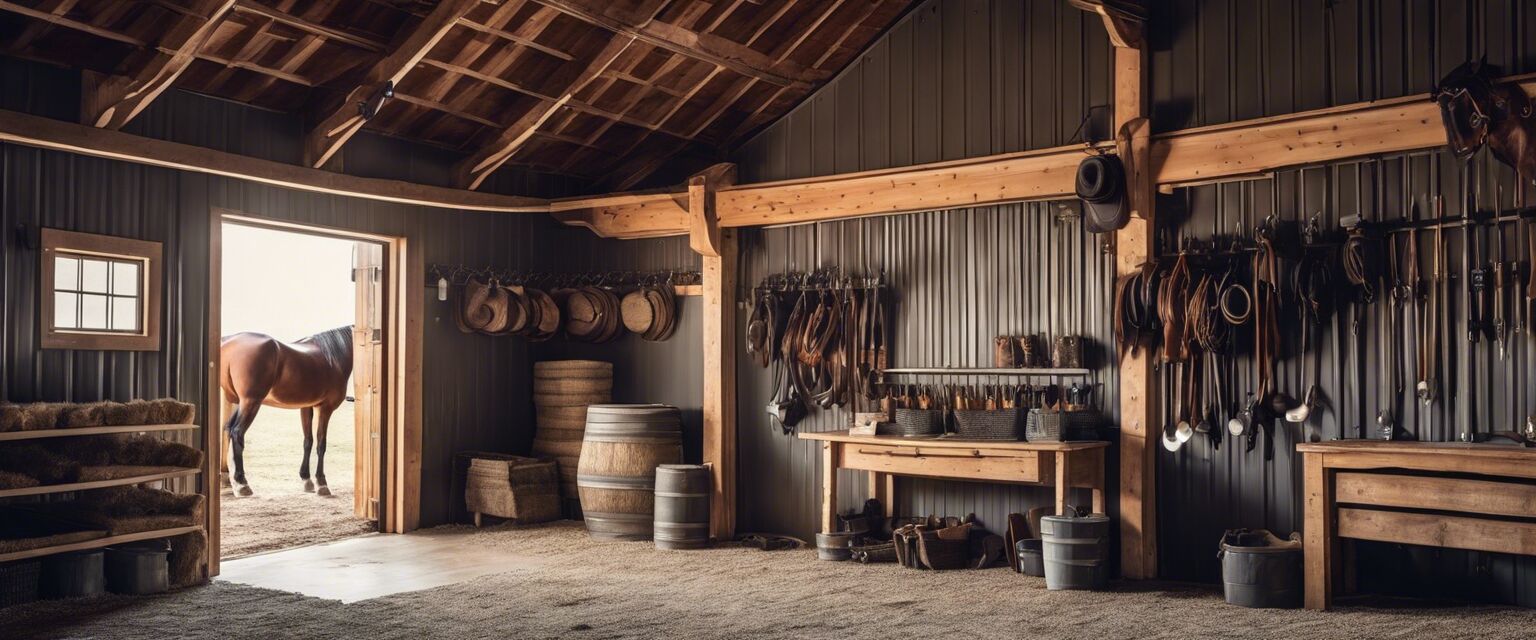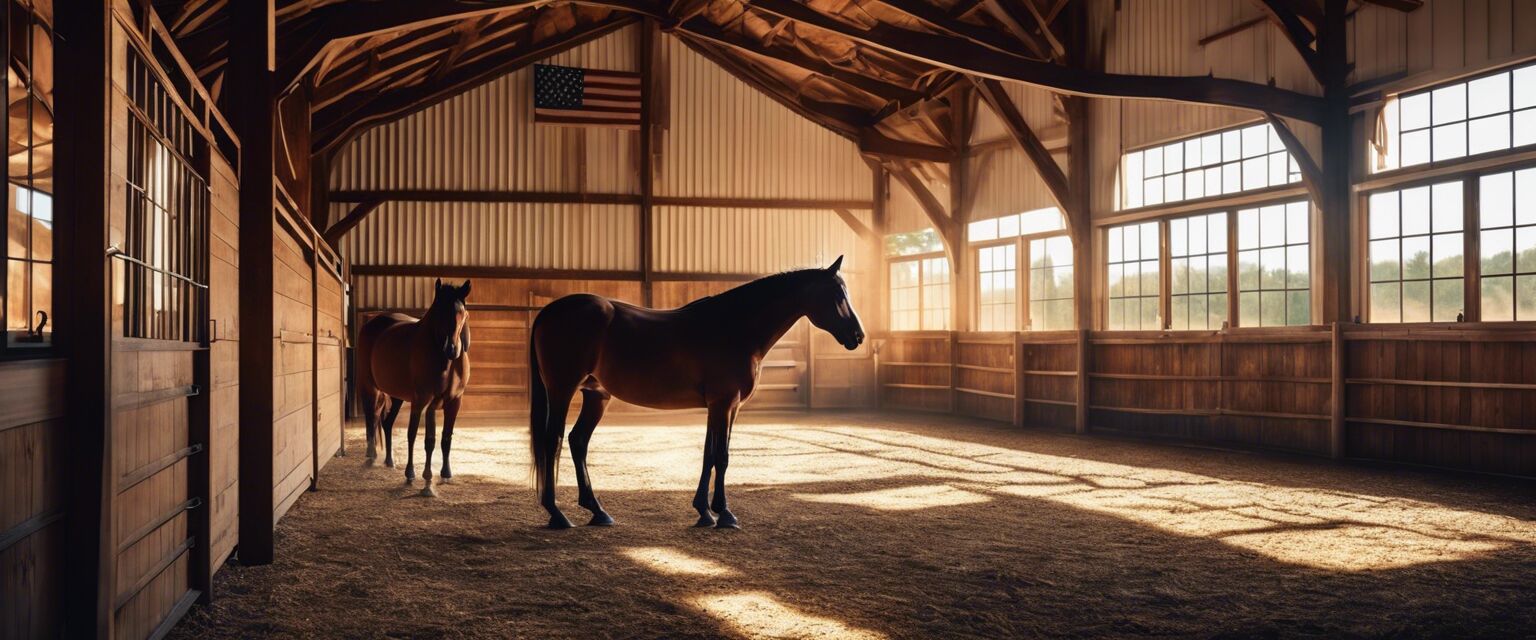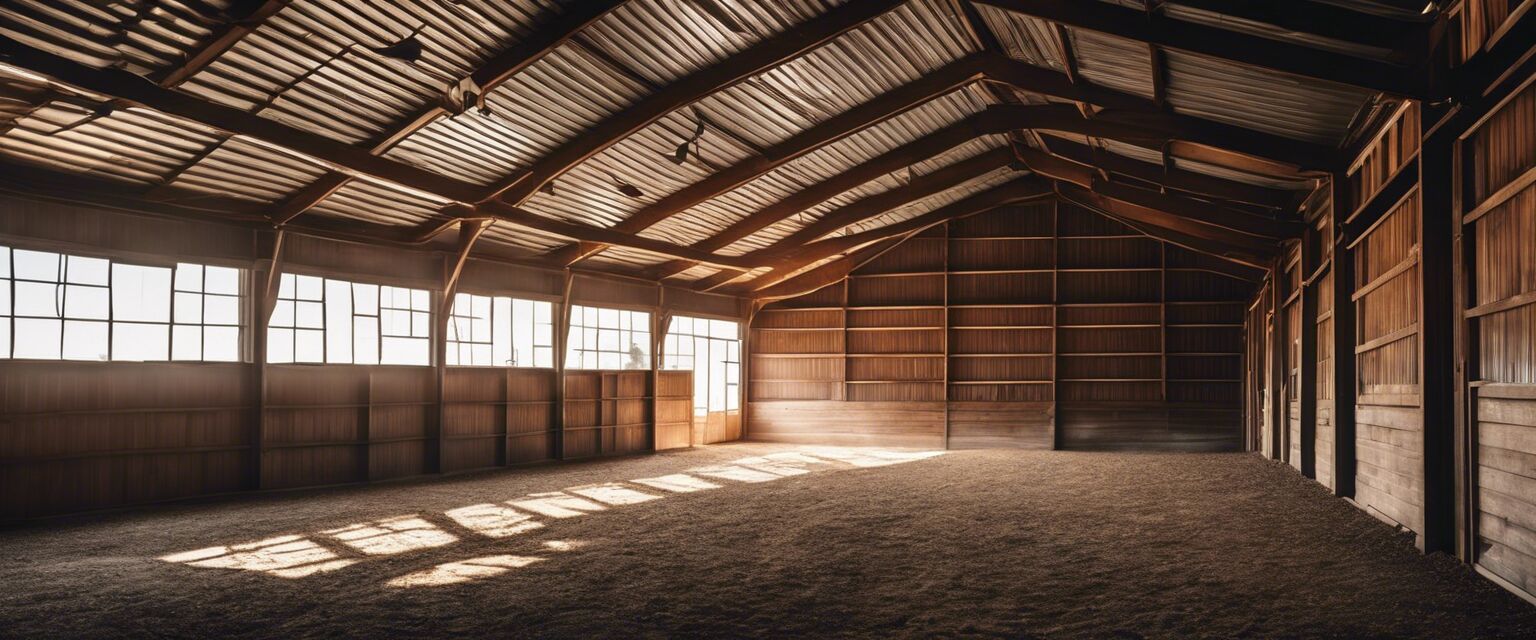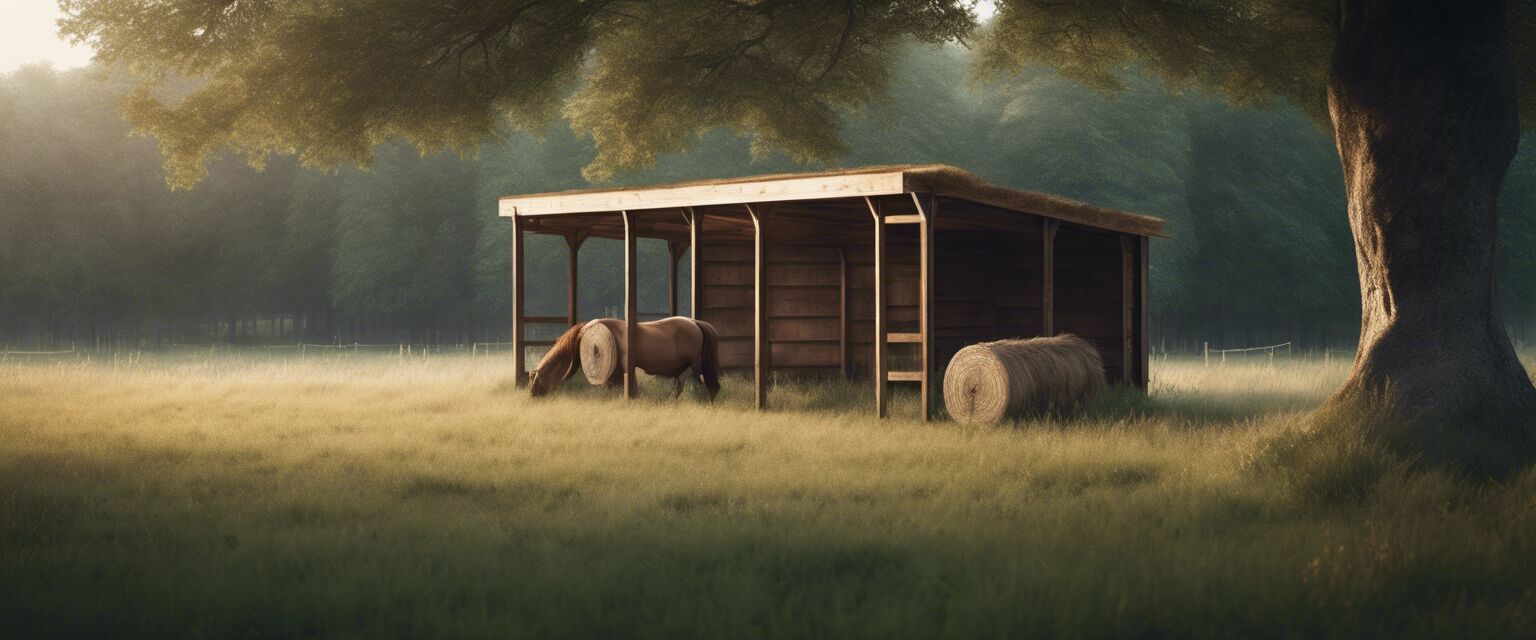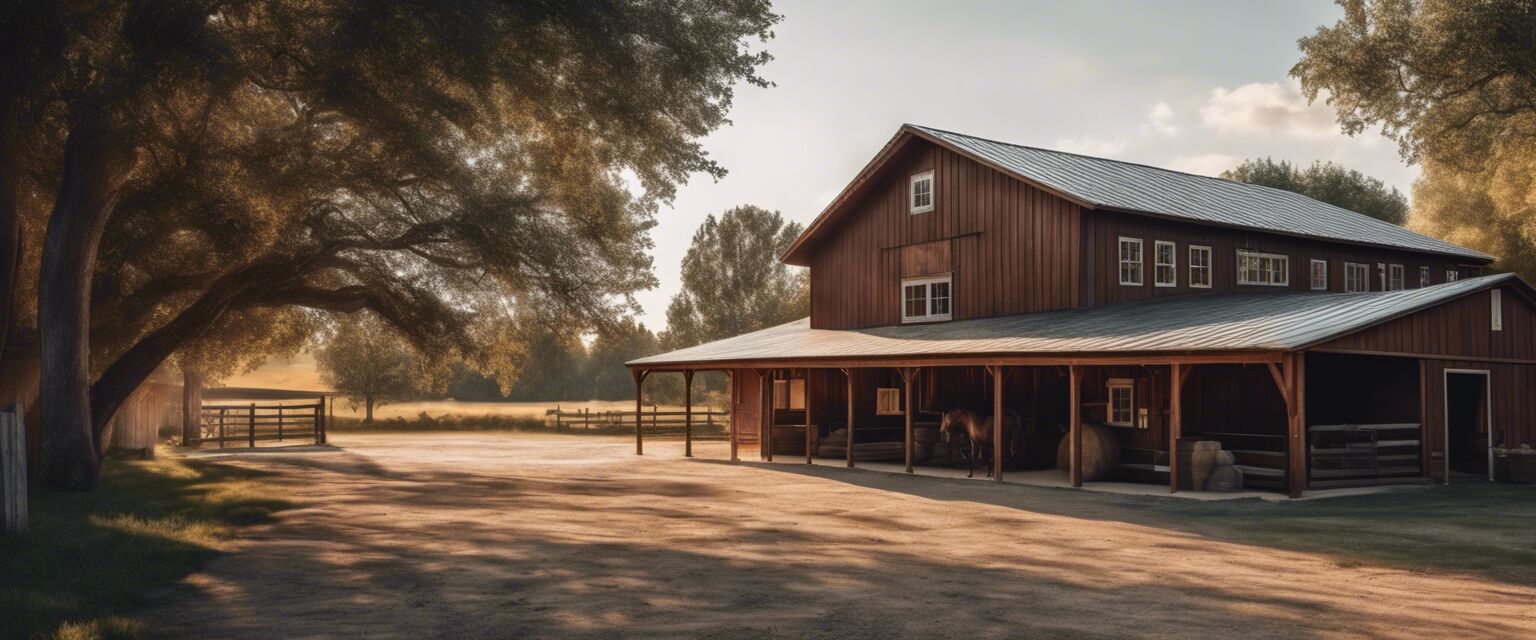
Barn Maintenance Tips
Key Takeaways
- Regular inspections help identify potential issues early.
- Keeping the barn clean prevents pests and illness.
- Proper ventilation is essential for horse health.
- Invest in quality materials for long-lasting structures.
- Safety measures protect both horses and handlers.
Maintaining a DIY horse barn is crucial for the health and safety of your horses. Regular upkeep not only prolongs the life of your barn but also creates a comfortable environment for your animals. In this article, we will cover essential maintenance tips that can help you keep your barn in top condition.
1. Regular Inspections
Performing regular inspections of your barn is vital. This includes checking for structural issues, signs of wear and tear, and overall cleanliness. Here are some areas to focus on:
- Roof and gutters
- Stalls and flooring
- Fencing
- Water and feeding areas

2. Cleaning and Organizing
Keeping your barn clean is essential for preventing pests and maintaining a healthy environment for your horses. Here are some cleaning tips:
- Remove manure and waste daily.
- Regularly clean feeding areas to prevent mold.
- Organize tools and supplies for easy access.
Cleaning Schedule
| Task | Frequency |
|---|---|
| Manure removal | Daily |
| Feeding area cleaning | Weekly |
| Full barn cleaning | Monthly |
3. Ventilation
Proper ventilation is crucial to keeping your barn air quality high and preventing respiratory issues in horses. Here are some tips:
- Install windows that can be opened.
- Use exhaust fans if necessary.
- Ensure that stalls are not overly enclosed.

4. Safety Measures
Ensuring the safety of both horses and handlers is paramount. Here are some essential safety measures to implement:
- Use non-toxic materials for all barn fixtures.
- Ensure that all electrical systems are up to code.
- Check that all fences are secure and free of sharp edges.
Pros
- Improved horse health and wellbeing.
- Increased lifespan of barn structures.
- Enhanced safety for both horses and handlers.
- Better organization leads to efficiency.
Cons
- Time-consuming maintenance tasks.
- Initial costs for quality materials.
- Requires knowledge of barn construction and upkeep.
5. Investment in Quality Materials
Investing in quality materials can save you time and money in the long run. Here are some areas where quality materials make a difference:
- Stall dividers and doors
- Roofing and siding materials
- Fencing options
Comparison of Materials
| Material Type | Durability | Cost |
|---|---|---|
| Wood | High | Medium |
| Vinyl | Medium | High |
| Metal | Very High | Medium |
6. Effective Feeding Solutions
Implementing effective feeding solutions can help maintain your horses' health. Consider the following:
- Use feeders that minimize waste.
- Ensure regular feeding times.
- Monitor feed quality regularly.
7. Pasture Management
Proper pasture management plays a crucial role in your barn's overall maintenance. Here are some tips:
- Rotate pastures to prevent overgrazing.
- Keep water sources clean and accessible.
- Install fencing to protect pastures from external threats.
Essential Pasture Management Tools
Tools that can assist in effective pasture management include:
- Fencing supplies
- Water troughs
- Feed storage bins
Conclusion
Maintaining a DIY horse barn requires diligence and dedication. By following these barn maintenance tips, you can ensure a safe, healthy, and comfortable space for your horses. For more information, check out our sections on barn building materials, barn décor and comfort, barn safety and security, feeding solutions, and pasture management tools.
Tips for Beginners
- Start with a maintenance checklist.
- Join a local equestrian community for support.
- Educate yourself about horse care and barn upkeep.
